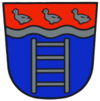
Updated 12 June 2024

The whole town was requisitioned in May 1945
Home to:
146th Heavy Anti-Aircraft RA 1945 (1)
600th (5th Battalion Duke of Wellington’s Regiment) Infantry Regiment RA 1945 (2)
HQ 21st Army Group with Defence Company 1945-1954 (3)
GHQ Liaison Regiment (Phantom) RAC 1945-1946 (4)
HQ 21st Army Group Signals 1945-1946 (5)

(1) arrived from Belgium 16 May 45 – moved to Niendorf north-east of Lübeck 5 Jun 45
(2) arrived from Belgium 3 Jun 45 – Adolf Hitler Straße later Friedenstraße – disbanded 6 Jun 45
(3) arrived from Süchteln west of Krefeld 3 Jun 45 – Hotel Königshof Kurpark – tactical HQ Gut Ostenwalde east of Osnabrück – support services Herford – redesignated HQ BAOR 25 Aug 45
(4) arrived from Süchteln west of Krefeld 14 Jun 45 – redesignated 1st GHQ Liaison Regiment RAC 22 Jan 46 to 6 Jun 46
(5) arrived from Süchteln west of Krefeld 3 Jun 45 – Sparkasse Bank Bahnhofstraße – redesignated HQ BAOR Signals merging with 2nd Line of Communication Signals 21 Aug 45 – redesignated 1st Headquarters Signals 10 Sep 45 – moved to Harewood Barracks 19 Jun 46
More to follow
Source: 21st Army Group later British Army of the Rhine to 1 Mar 49
Part II – original post
Bad Oeynhausen played host to many formations at one time or another at the end of World War 2 and in the following years. Many of these formations and units were founded here and then moved on to other locations.
Home to:
HQ BAOR 1945 to October 1954 (1)
HQ BAOR Signal Regiment (2)
HQ NORTHAG Signal Regiment (3)
18th Army Group Signal Regiment (4)
1 Corps Signal Regiment (5)
4 Base Workshops REME circa 1955
(1) HQ BAOR was established here before moving to Rheindalen in about October 1954
(2) Redesignated HQ NORTHAG Sig Regt 1952
(3) Redesignated 18th Army Group Sig Regt 1953. Moved to Krefeld possibly 1958.
(4) Remained in Bad Oeynhausen after HQ BAOR moved to Rheindalen
(5) Formation date possibly 1951.
Details shown are used with the kind permission of Richard A. Rinaldi, co-author of The British Army in Germany (BAOR And After): An Organisational History 1947 – 2004.
I was called up for my National Service with REME in January 1954 at Bovington Camp, Dorset, in six inches of solid ice. After 3 weeks we were transferred to Barton Stacy to complete our training. Following embarkation leave we were sent to 4th Inf Wksp at Duisburg for allocation etc. I went to 6th Inf Wksp at Dortmund, Redesdale Barracks, in April 1954 and stayed there until September 1955 when I was promoted to Sgt and moved to 4 Base Workshops at Bad Oeynhausen from where I was demobbed in January 1956.
4 Base Wksp at Bad Oeynhausen was located in the massive workshops which before the War belonged to a firm called Eisenwerk Weserhütte. They made heavy earth moving equipment etc. 4 Base Wksp was completely civilianised with REME personnel acting as liaison people in each department. I was in the drawing office. The base had complete rebuild programmes for Scamell recovery tractors, 14 ton lorries, 3 ton Bedfords and Austins, Jeeps and surprisingly VW Beetles. I believe that the original owners took over in the late fifties or early sixties and started manufacturing their original products.
22992585 Sgt Bill Burkey
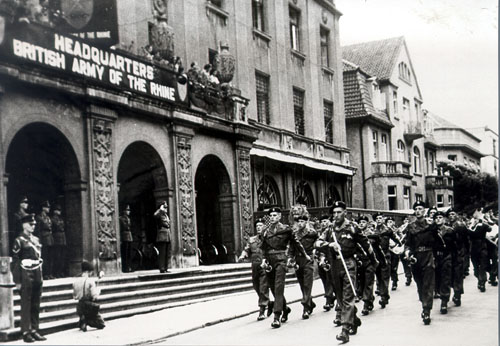
HQ, BAOR, Bad Oeynhausen, 1945
I seem to remember about 50 of us mixed NS (National Service) units from UK arriving there (of the above photo) from Osnabrück station one Sunday afternoon in late April 1953. We were bedded down in the main hall overnight pending our onward postings next day. I was RMP and given a rail voucher to Dissen on an old rattler of a train with wooden seats. There I was picked up by Jeep and taken to Bad Rothenfelde which was 1 Corps RMP HQ in those days before the move to Bielefeld (Ripon Bks) in October 1953! One thing that I clearly remember was the wrought ironwork in the building – swastikas – does anyone else have any information?
Redcap
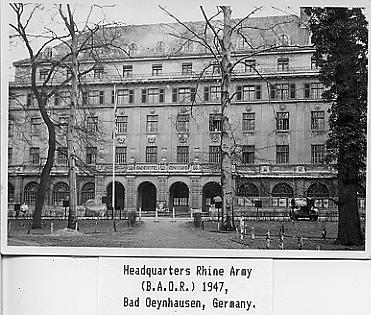
The town itself was not home to a barracks, so the British Army occupied the local Kurpark (Spa, see below).
After the war the city was closed for the people of Bad Oeynhausen, and 2/3 of the inner city was fenced in with barbed wire. The people in this area had to leave their homes within 24 hours and what was left in the houses was burned by some (not all) of the British soldiers, regardless of being precious, sentimental or important to the owners. Also excrement was deposited in rooms or on beds……you see, not all the houses were used for accommodation.
HQ BAOR wasn’t in the former HQ of the Gestapo, for the simple reason that there was not a Gestapo quarter in the city. The Gestapo HQ would usually be situated in the city of the respective county administration, in this case Herford, Lübbecke and Minden.
What is described as the Gestapo HQ was and still is a hotel; The “Hotel Königshof” (Court of the King). In the war, there was no need for such a big hotel and so it became a forces hospital to the Wehrmacht, under the command of the local German authorities, until the British came arrived. The hotel changed its front in the 1970s, but is still used as hotel and can be viewed by clicking here: Hotel Königshof.
The BAOR (4 Heavy Workshop REME) occupied part of the Eisenwerk Weserhütt building until 1958. After that the entire complex was used again by Weserhütte to build heavy earth moving equipment.
Christian Kuhlmann

The image above was taken at Gut Ostenwalde where Monty initially lived. It is to the north of Melle and some 17km NW of Bad Oeyenhausen. The property was later used as Church House until it moved to Lubbecke.
From the book Drei Jahre nach Null – Geschichte der britischen Besatzungszone 1945-1948 by Wolfgang Trees.
Charles Whiting and Thomas Omansen.

1952 – Kurpark and other ranks’ NAAFI.
Courtesy of Ted Nann 22630273
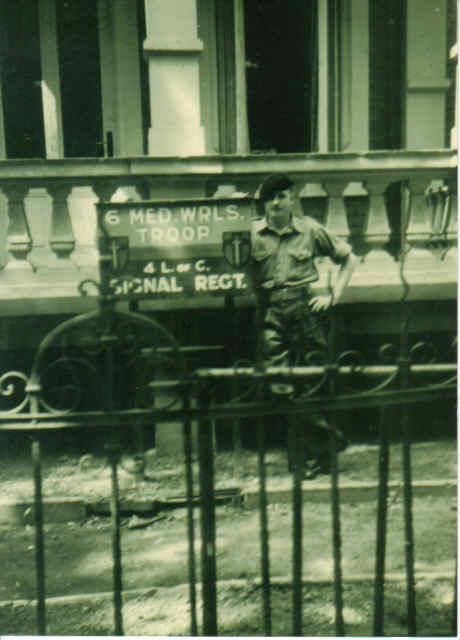
These houses were used for accommodation and were also used as married quarters for the NCO’s. This particular one on Porta Straße housed the 6th. Medium Wireless Troop, L.of C. Signal Regiment.
Courtesy of Ted Nann 22630273
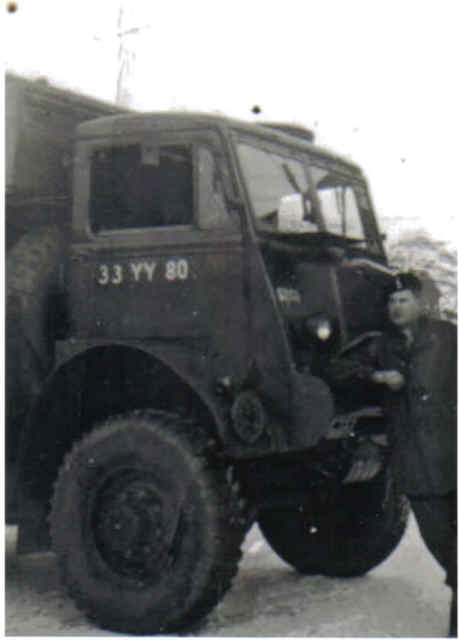

Bedford with driver Wally Groves – he could park it on a tanner/sixpence.
In Bad Oeynhausen our function (6th Medium Wireless Troop) was to provide the communications during manoeuvres/schemes during war/play with each unit usually consisting of a Crew Commander(me) or an officer, 2 other operators and a driver. We used a Bedford type Command Vehicle(CV). The wireless used was a 52 set and sometimes we carried the smaller 19 set, which was less powerful. We were deployed as a single unit with supplies on board to a specific map reference, this could last two or so days, on larger schemes we were attached to infantry regiments to provide their communications.
Courtesy of Ted Nann 22630273
Some literature for those who can read German: Rico Quaschny (Ed.): Bad Oeynhausen zwischen Krieg und Frieden. Kriegsende und Besatzungszeit in Zeitzeugnissen und Erinnerungen,Verlag für Regionalgeschichte, Bielefeld 2005, ISBN 3-89534-621-7 (19,- EUR ) (translation: Bad Oeynhausen between War and Peace – End of the War and Occupation in documents and memories of contemporary witnesses; Publishing House for regional History Bielefeld 19 Eur = ca. 15 GBP )

1. Bad Oeynhausen – Main railway Station. I think a lot of BAOR soldiers know this building
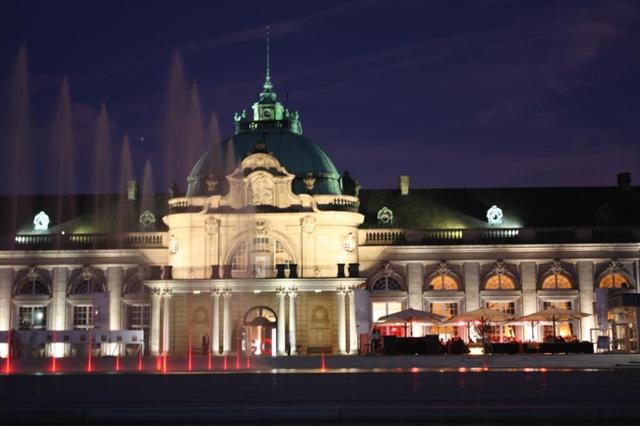
2. The Kurhaus today (See photo of Kurpark above)
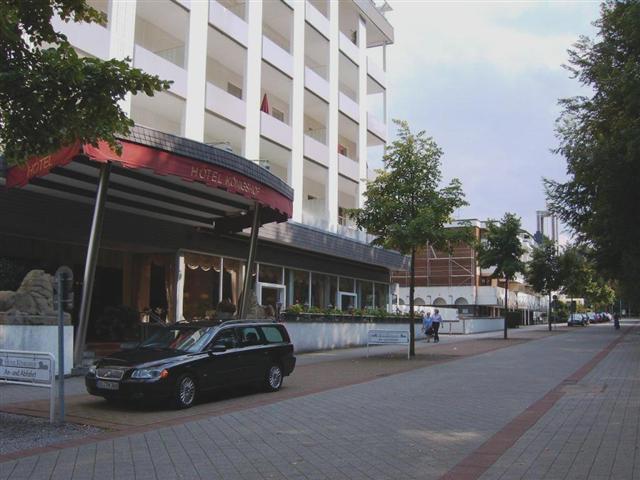
3. Hotel Konigshof today (The Lions are still there)

4. Part of the side of the Hotel Konigshof and part of the Kurpark
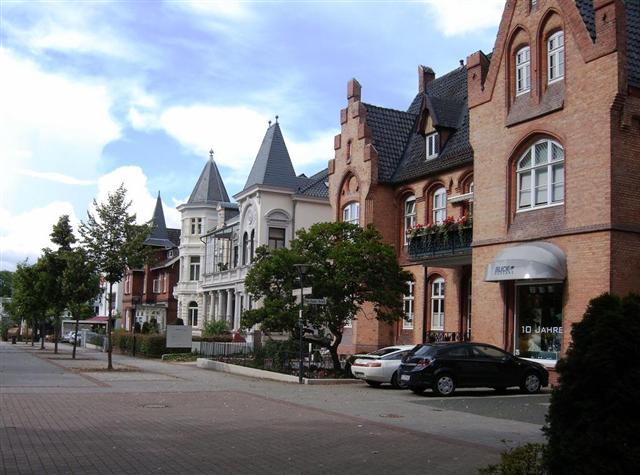
5. A view of part of Am Kurpark

An aerial view of Bad Oeynhausen in 1926 Blue dot (centre bottom) is the Main Railway Station (photo 1) Yellow dot (top centre) is the Kurhaus (photo 2) Red and orange dots (centre) are the Hotel Konigshof (photos 3 and 4) Purple/Magenta dot (below and right of Hotel) is part of the Kurpark (photo 5) (The coloured dots unfortunately lost a lot of colour in uploading – Paul)
Text and photographs courtesy of Dirk Frodermann
